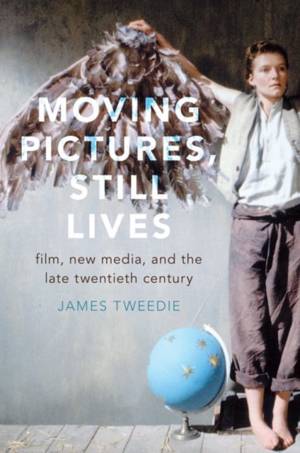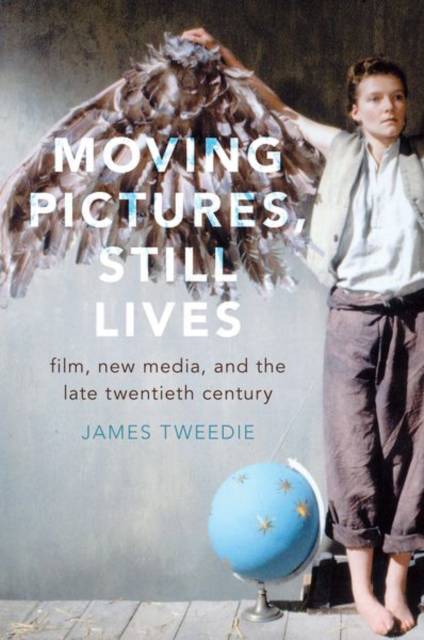
En raison d'une grêve chez bpost, votre commande pourrait être retardée. Vous avez besoin d’un livre rapidement ? Nos magasins vous accueillent à bras ouverts !
- Retrait gratuit dans votre magasin Club
- 7.000.000 titres dans notre catalogue
- Payer en toute sécurité
- Toujours un magasin près de chez vous
En raison de la grêve chez bpost, votre commande pourrait être retardée. Vous avez besoin d’un livre rapidement ? Nos magasins vous accueillent à bras ouverts !
- Retrait gratuit dans votre magasin Club
- 7.000.0000 titres dans notre catalogue
- Payer en toute sécurité
- Toujours un magasin près de chez vous
Moving Pictures, Still Lives
Film, New Media, and the Late Twentieth Century
James Tweedie
Livre relié | Anglais
152,95 €
+ 305 points
Format
Description
Moving Pictures, Still Lives revisits the cinematic and intellectual atmosphere of the late twentieth century. Against the backdrop of the historical fever of the 1980s and 1990s-the rise of the heritage industry, a global museum-building boom, and a cinematic fascination with costume dramas and literary adaptations-it explores the work of artists and philosophers who complicated the usual association between tradition and the past or modernity and the future. Author James Tweedie retraces the "archaeomodern turn" in films and theory that framed the past as a repository of abandoned but potentially transformative experiments. He examines late twentieth-century filmmakers who were inspired by old media, especially painting, and often viewed those art forms as portals to the modern past. In detailed discussions of Alain Cavalier, Terence Davies, Jean-Luc Godard, Peter Greenaway, Derek Jarman, Agnès Varda, and other key directors, the book concentrates on films that fill the screen
with a succession of tableaux vivants, still lifes, illuminated manuscripts, and landscapes. It also considers three key figures-Walter Benjamin, Gilles Deleuze, and Serge Daney-who grappled with the late twentieth century's characteristic concerns, including history, memory, and belatedness. It reframes their theoretical work on film as a mourning play for past revolutions and a means of reviving the possibilities of the modern age (and its paradigmatic medium, cinema) during periods of political and cultural retrenchment. Looking at cinema and the century in the rear-view mirror, the book highlights the unrealized potential visible in the history of film, as well as the cinematic phantoms that remain in the digital age.
with a succession of tableaux vivants, still lifes, illuminated manuscripts, and landscapes. It also considers three key figures-Walter Benjamin, Gilles Deleuze, and Serge Daney-who grappled with the late twentieth century's characteristic concerns, including history, memory, and belatedness. It reframes their theoretical work on film as a mourning play for past revolutions and a means of reviving the possibilities of the modern age (and its paradigmatic medium, cinema) during periods of political and cultural retrenchment. Looking at cinema and the century in the rear-view mirror, the book highlights the unrealized potential visible in the history of film, as well as the cinematic phantoms that remain in the digital age.
Spécifications
Parties prenantes
- Auteur(s) :
- Editeur:
Contenu
- Nombre de pages :
- 304
- Langue:
- Anglais
Caractéristiques
- EAN:
- 9780190873875
- Date de parution :
- 01-06-18
- Format:
- Livre relié
- Format numérique:
- Genaaid
- Dimensions :
- 236 mm x 160 mm
- Poids :
- 616 g

Les avis
Nous publions uniquement les avis qui respectent les conditions requises. Consultez nos conditions pour les avis.






